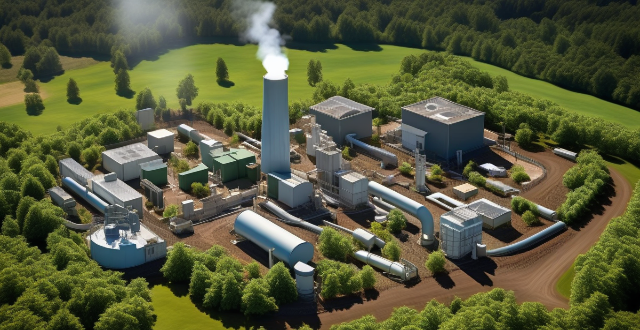Industrial processes significantly contribute to greenhouse gas (GHG) emissions, which are a major driver of climate change. These contributions come from various sources including energy consumption, manufacturing processes, agricultural industries, construction industries, and waste management. Mitigation strategies such as improving energy efficiency, optimizing processes, implementing carbon capture and storage technologies, and enforcing policy and regulation can help reduce these emissions.

Industrial Processes and Greenhouse Gas Emissions
Industrial processes are a significant contributor to greenhouse gas (GHG) emissions, which play a crucial role in climate change. These processes involve the conversion of raw materials into finished goods using various machines, tools, and labor. The following are some ways in which industrial processes contribute to GHG emissions:
Energy Consumption
Fossil Fuels
- Combustion: Burning fossil fuels like coal, oil, and natural gas for energy releases carbon dioxide (CO2), a potent GHG.
- Power Generation: Industrial facilities often rely on electricity generated from fossil fuels, contributing to CO2 emissions.
Non-Fossil Fuels
- Deforestation: Clearing land for biomass energy production leads to deforestation, reducing the ability of trees to absorb CO2.
- Methane Emissions: Biomass combustion can release methane (CH4), a more potent GHG than CO2.
Manufacturing Processes
Chemical Reactions
- Emissions from Production: Chemical reactions involved in producing certain materials can release GHGs like CO2 and CH4.
- Waste Disposal: Improper disposal of chemical waste can lead to further GHG emissions.
Material Sourcing
- Mining: Extraction of raw materials like metals and minerals often involves energy-intensive processes that emit GHGs.
- Transportation: Moving raw materials and products around the world contributes to CO2 emissions from transportation.
Agricultural Industries
Livestock Farming
- Methane Emissions: Animal digestion and manure management in livestock farming produce CH4.
- Nitrous Oxide Emissions: Fertilizer use in crop production releases nitrous oxide (N2O), another potent GHG.
Food Processing
- Energy Use: Running food processing plants requires energy, often derived from fossil fuels, leading to CO2 emissions.
- Waste Generation: Food waste decomposition produces CH4 if not properly managed.
Construction Industries
Building Materials Production
- Cement Manufacturing: Producing cement releases large amounts of CO2 due to the chemical process involved.
- Steel Production: Steelmaking is energy-intensive and typically relies on fossil fuels for energy, resulting in CO2 emissions.
Building Construction and Demolition
- Energy Use: Power tools and machinery used during construction consume energy, often from non-renewable sources.
- Waste Disposal: Demolition generates waste that can release GHGs if not managed correctly.
Waste Management
Landfilling
- Anaerobic Decomposition: Organic matter in landfills decomposes without oxygen, producing CH4.
- Leachate Formation: Liquid that seeps through landfills can produce N2O if not properly treated.
Incineration
- Direct Emissions: Burning waste releases CO2 and other pollutants directly into the atmosphere.
- Energy Recovery: While some incineration facilities convert waste to energy, this process still results in net CO2 emissions.
Mitigation Strategies
Energy Efficiency
- Improved Technologies: Using advanced technologies reduces energy consumption and associated GHG emissions.
- Renewable Energy: Switching to solar, wind, hydroelectric, or geothermal power decreases reliance on fossil fuels.
Process Optimization
- Lean Manufacturing: Streamlining production processes reduces waste and lowers energy demand.
- Resource Efficiency: Minimizing resource use through recycling and reuse cuts down on extraction and processing emissions.
Carbon Capture and Storage (CCS)
- Post-Combustion Capture: Capturing CO2 after it's released from burning fossil fuels prevents its release into the atmosphere.
- Oxy-Fuel Combustion: Burning fuel in an atmosphere of mostly oxygen reduces the volume of nitrogen to dilute the CO2, making it easier to capture.
Policy and Regulation
- Emission Standards: Setting limits on allowable GHG emissions encourages industries to adopt cleaner practices.
- Carbon Pricing: Placing a cost on carbon emissions creates an economic incentive to reduce them.
By understanding these contributions and implementing effective mitigation strategies, industries can work towards reducing their environmental impact and helping combat climate change.